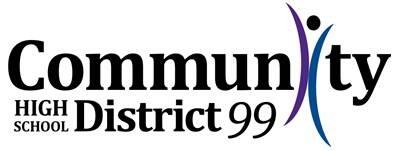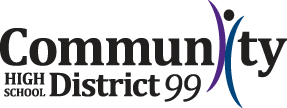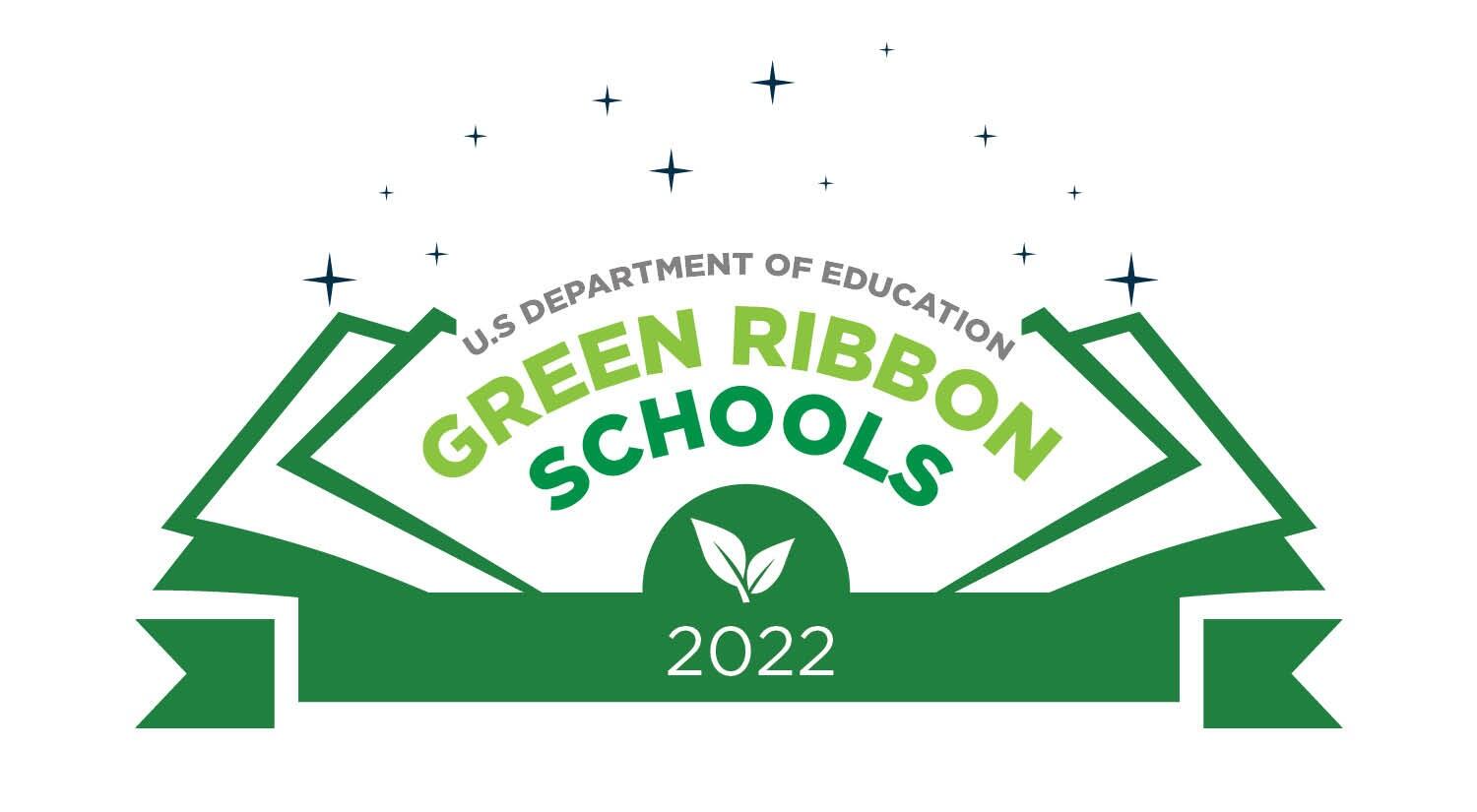
Go Green: Sustainability
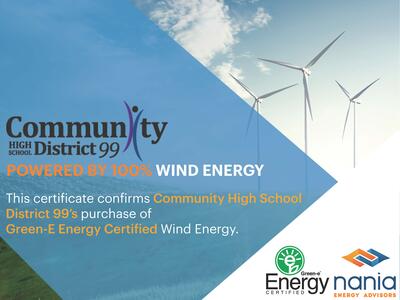
District 99 is committed to ensuring energy conservation and environmental awareness. Both are important not only to the future of our students, but also to being fiscally responsible to our taxpayers.
As a sign of our commitment to reduce our environmental impact and costs; improve student and staff health; and provide effective environmental and sustainability education in our daily operations we have made direct efforts to replace outdated and inefficient heating and cooling systems to reduce overall energy costs with a commitment to use only energy service companies (ESCO’s) for all HVAC improvement projects.
Energy savings were further enhanced when we switched from T12 fluorescent light bulbs/ballasts to T8 light bulbs in classrooms and offices; installed LED lighting in our small and large gymnasiums; and installed covers on swimming pools at both schools, reducing heating costs by 28 percent and the pool’s annual water consumption by 38 percent.
For all new construction and/or renovation projects, we consider LEED (Leadership in Energy and Environmental Design) guidelines during design and construction to ensure energy and water efficiency on all future projects to reduce operational costs. Some simple examples are installing light, faucet, and toilet sensors are throughout our buildings, as well as adding water refilling stations. We also have tanks that receive rain water from our fields to supply water for the irrigation system and new outdoor seating areas and patios were created to extend the classrooms to a natural environment. An additional drop-off circle was constructed to reduce idling time.
Over the years, District 99 has enacted fundamental changes to our environments in order to better align our buildings to our conservation efforts. Highlights of our initiatives include: establishing quarterly Energy Committee Meetings with a core group to bring together information from employees and students. We work with Nania Energy to purchase renewable energy and power 100% of our electricity usage via Green-E Energy Certified National Wind RECs. We have also installed solar panels funded via a $7,000.00 grant from Department of Commerce and Economic Opportunity (DCEO) for our science students.
Furthermore, we purchase 100% of our bulk purchase copy paper from recycled sources and deepen our recycling efforts by educating our students to recycle cafeteria waste into appropriate receptacles while developing a food share program for unwanted whole foods.
Community High School District 99 also actively seeks contracts with companies of like-minded green thinking, such as First Student’s offerings of mass transportation via their award winning Go Yellow, Go Green Award bus fleet that diverts more than 7 million pounds of motor oil and oil filters from landfills. We also use Anderson Pest Control, a CERTIFIED GREEN PEST CONTROL company providing eco-effective service that align with our green goals.
Improving the health and wellness of students and staff is of utmost importance thus prompting our annual, three-year, and six month inspection agreements with Gallagher Bassett Technical Services to complete regular testing at all of our district buildings to deliver a consistent message to building occupants concerning the buildings superior air quality. The data can also identify energy savings where temperatures or fresh air are outside of IAQ and energy parameters. They conduct an indoor air quality study including temperature, humidity, and carbon dioxide.
Our daily building operations continuously promote clean air and clean surfaces and we are proud to say we use "green," environmentally-friendly cleaning supplies including those on the EPA-N list to combat the coronavirus and beyond.
Eating clean also encourages a healthy body with proper nutrition now available in our newly renovated servery lines that include a wide variety of customizable and premade options throughout all nutritional categories while having allergen friendly options readily available.
Coordinated efforts for a healthy mind and body have also been included in our recent building renovations to make access to counseling and social services easily assessable during lunch periods and study halls. Online counseling appointments are easily scheduled with confidentiality and convenience. Wellness and Mental Health Resources are widely available via the CSSS Teams at each building and online. Psychologist, Social Workers, Counselors, Nurses are well staffed and on site during school hours. Mental health and wellness are further supported through Mindful Mornings, PBIS Initiatives, AVID, STRIVE programs, Vaccine Clinics, coat and food drives, and charitable runs which foster health and scholarships such as the Grove Express and Mustang 5K are hosted annually. Live plants were also installed inside the buildings to improve focus, lessen symptoms of anxiety, and boost the moods of staff and students.
District 99 students participate in several clubs related to environmental sustainability. Our AP Environmental Science course have field trips as part of their required curriculum. Each year our students travel to a water treatment plant, a landfill, a business such as “The Plant” in Chicago that is a sustainable business, and an energy generating facility. Our Women in STEM club printed out posters to hang in every room and in the common areas above the recycle bins for what items fall into the various categories of recycling.
Beyond facilities and curriculum, Community High School District 99 has partnered the community to participate in Earth Chats Podcast with SCARCE, Adopt a Highway, the Illinois Science and Technology Coalition of Chicago to provide a research challenge for students; CEMAST as well as ComEd to help develop innovative ideas for use of solar, wind, and additional technologies to move toward a greener method of energy production; and the Morton Arboretum to access their 300 test beds that are planted in a homogeneous and heterogeneous state. We are also in the process of restoring community land to native prairie for environmental and recreational benefits inclusive of student access to a natural laboratory. 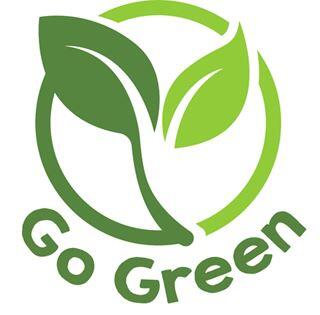
Earth Action Club is dedicated to preserving the environment and developing awareness of the harmful effects our actions can have on the environment. Students in our empowerment club, focus on sustainability and students in our Outdoor Environmental Club develop an environmental awareness through engaging in various activities. On or around Earth Day each year some students participate in an Energy Slam and invite students in other classes as spectators. They prepare presentations around more sustainable energy options. As an extension of our trip we had a group of students that returned from Costa Rica inspired to start a Sustainability Club.
All students and staff participate in quarterly Deep Equity and Inclusion sessions creating Affirming Learning Environments that incorporate civic learning. We have a SEL (Social Emotional Learning) Collaborative - a group of teachers and CSSS members who meet monthly to talk about embedding SEL into our practices.
Community High School District 99 is committed to sustainability and will continue our pursuit for a greener globe to protect the environment and welfare of future generations.%20(1).jpg?mask=2)
Community High School District 99 QUICK FACTS
REDUCED ENVIRONMENTAL IMPACT AND COSTS
A. ENERGY
1. Do you track energy use in ENERGY STAR Portfolio Manager, or another way in your district?
Yes

2. If so, how have you tracked your response usage, for how long, and how has your usage dropped over that time?
Nania Energy provides monthly energy usage via third party suppliers EDI tracking of data they receive from the utility (Nicor and ComEd). Electronic data interchanges between third party energy suppliers and the respective utilities. We have 24-months of usage data that can be accessed. Year over year (2019 vs. 2020), the usage for North decreased 1,212,293 kWh and the annual PLC value dropped 410 kW and for South, the usage decreased 864,079 kWh and the annual PLC value dropped 261 kW. (Supporting data and line graphs can be submitted if needed.). With increasing natural gas prices, by locking in a fixed rate contract of $0.2675/therm with Constellation till May 2023, we were able to save a minimum of $147,102.50 based on current market rates.
3. Please describe the strategies you have implemented or planned to reduce your energy consumption.
Faculty, staff and students are all involved in the effort to conserve energy at District 99. The most important way we have reduced our energy usage is by changing our behavior. Saving energy has become second nature for all of us at District 99.
We have hired Nania Energy Advisors as our consultant to thoroughly research opportunities to purchase energy through renewable sources and signed new energy contracts in 2020 powering Community High School District 99 with 100% wind energy with the purchase of Green-E Energy Certified Wind Energy.
Over the years, District 99 has enacted fundamental changes to our environments in order to better align our buildings to our conservation efforts. To support these efforts, an Energy Committee was formed with a core group to bring together information from district wide employees and students. They meet quarterly and have worked together to switch from T12 fluorescent light bulbs/ballasts to T8 light bulbs in classrooms and offices; LED light upgrades in gymnasiums; replace outdated and inefficient heating and cooling systems to reduce energy costs; ensure use of LEED guidelines in ongoing construction projects; install individual solar panels for our Science Dept to academically inform our students of solar energy; and installing high efficient dehumidification units in both natatoriums and pool covers on swimming pools at both schools, which reduced the heating costs by 28 percent and each pool’s annual water consumption by 38 percent.
4. What percentage of your school's energy is obtained from:
a. On-site renewable energy generation: <1%
Type: Custom made awning mount with Unirac LT rails, Enphase M215's, Canadian Solar 265M, pull out disconnect, 12 GA wire, Square D 20amp double pole breaker.
b. Purchased renewable energy: 100% of electricity usage
Type: Green-E Energy Certified National Wind RECs
5. In what year was your school originally built?
Downers Grove North 1928 and Downers Grove South 1964
6. What is the total building area of your school?
Downers Grove North 503,000 Square Feet and Downers Grove South 554,000
7. Please describe any new construction or major renovations at your school in the past ten years. Describe how you achieved green building or similar standards and any certifications earned.
District 99 is committed to sustainability and green building standards. To increase efficiency, we replaced an Existing 270-ton chiller unit serving the 1999 addition at NORTH with a new energy efficient 270-ton chiller in kind with updated BAS controls. We also replaced the existing packaged rooftop heating and cooling unit (RTU-9) with a new unit with DX cooling and HW heating at NORTH, as well as replacing existing packaged rooftop heating and cooling units (RT-17 & RT-19) and air handling units (AH-4 & AH-5) with new units at SOUTH to increase efficiency. We are also replacing the old Boiler at the ASC office with a new Lochinvar Knight XL 97% Efficiency Hot Water Boiler Model KBX0500N complete with Circulating Pump, Low Water Cut-Out, and Neutralizer Tank, as well as install a new Amtrol AX-40V-D Vertical Expansion Tank.
Our MFP Project between 2018-2022 involved updating classrooms and science labs to leverage new instructional technologies and evolving teaching methods, including STEM and collaborative, project-based learning. This includes renovating our culinary arts labs to reflect changes in the industry. Creating a Learning Commons that will serve as the educational “Main Street” for each high school. These flexible spaces are designed to meet the academic requirements and social-emotional needs of students. Students now have direct access to the offices of key resources, including college and career counselors, social workers, psychologists, counselors, activities, technology support, deans, cafeteria, library and bookstore. Creating this centralized space makes the offices more easily accessible for students. The new spaces are dual used for teaching and learning during the day and are available for community use during off hours. Enhancements to outdoor spaces and fields, including the addition of locker rooms and training rooms as well as the replacement of bleachers, to make them accessible for students, staff and visitors with disabilities.
Over the years, District 99 has pursued grants to defray the cost of projects whenever there is an opportunity to do so. For example, we recently received $180,000 in grant reimbursement for boiler projects. LEED (Leadership in Energy and Environmental Design) guidelines are always considered during design and construction. These practices will ensure that the buildings are energy and water efficient, to reduce future operating costs.
8. Please describe your sustainability policy and practice for new or renovated construction materials and building maintenance.
LEED Guidelines were followed throughout our MFP Project. These practices will ensure that the buildings are energy and water efficient, which may reduce future operating costs.
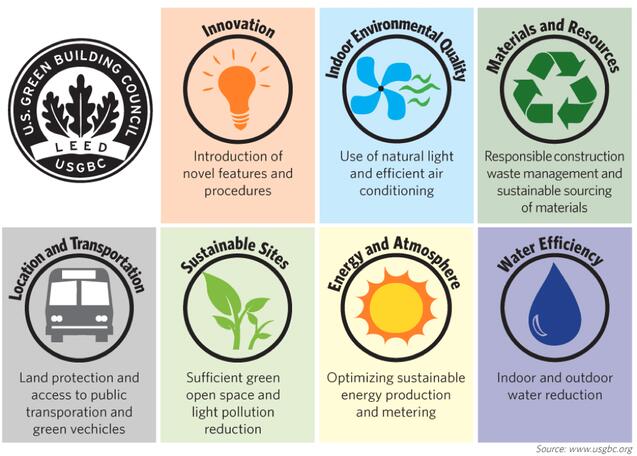
B. WATER AND GROUNDS
9. Can you demonstrate a reduction in your school's total water consumption from an initial baseline or describe your best practices to limit water usage?
Installing covers on swimming pools at both schools, which reduced the heating costs by 28 percent— saving $19,000 per pool, per year in heating costs. It also reduced each pool’s annual water consumption by 38 percent (or 108,500 gallons per pool)
10. What percentage of your landscaping is considered water-efficient and/or dedicated to ecological or instructional use?
There is a parcel of land located at 4341 Saratoga Avenue that is owned by DG Township. The Parties wish to restore the Land to native prairie land ("the Project"). The Project will restore the Land to native prairie which will be of environmental and recreational benefit to Township residents and will enable the students of CHSD99 to have a natural laboratory experience in the planting and maintenance of the prairie land. This is currently underway.
11. Describe the water sources used for irrigation, including cisterns or rain barrels.
The schools have tanks that receive rain water from our fields to supply water for the irrigation system.
12. Describe any efforts to reduce storm water runoff and/or reduce impermeable surfaces.
The District complied with all of the Village of Downers Grove site drainage requirements per http://www.downers.us/res/stormwater-management and received the required permits
C. WASTE AND CHEMICALS MANAGEMENT
13. Describe the strategies you use to divert solid waste (e.g. trash, cafeteria waste paper, or landscape waste) from landfills due to reduction, recycling and/or composting.
Recycle recepticles are placed throughout our buildings and exterior areas with educational signs that direct students to make educated choices for recycling aluminum cans, plastic bottles and jugs, empty cardboard, and loose paper that is clean, dry and empty.
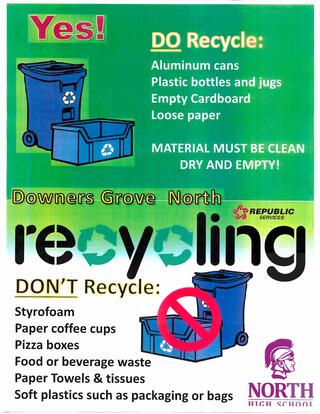
14. What percentage of your school's total office and classroom paper content is post-consumer material, fiber from forests certified as responsibly managed and/or chlorine-free?
100% of our bulk purchase copy paper is recycled multipurpose paper purchased from Midland Paper Company where sustainability truly is in their roots. Their team of experts has a deep knowledge of the environmental impact of paper in the supply chain and can guides us to choose paper from sustainable sources. To reduce the impact of paper use on the environment, they partner with vendors who are committed to suppliers who: Adhere to rigorous forest management standards; Develop and promote the use of renewable energy; Make appropriate use of recycled fiber; Provide public information about the environmental impact of all forms of communication; Promote forest certification in the U.S. and around the world. They have the chain of custody certifications to stand by our commitments.

15. List the types and estimated quantities of chemicals (e.g. laboratory materials, cleaning products, pesticides) managed at your school, and how they are stored, disposed of, and minimized:
We are committed to using "green," environmentally-friendly cleaning supplies including those on the EPA-N list to combat the coronavirus. We store in our storage/maintenance garage. We bring to the dock quantities to work with, 1/2 boxes at a time depending on product. Disposal: We have not had to dispose of any cleaning chemicals in the past few years. When we have chemicals (from old photolab, jewelry, science, etc.) we've contracted with Hazchem Environmental Corporation out of Addison, IL to inventory and dispose. Minimize: We've evaluated our products and are limiting the different types of cleaning products to as few as possible.
16. Describe how your school purchases environmentally preferable products for use by students and staff:
We do not use bleach in our schools. We are currently using products on the EPA N List.
D. ALTERNATIVE TRANSPORTATION
17. What percentages of your students walk, bike, bus, or carpool to and from school?
No means to track this information. We have students that are assigned bus routes. Anyone that does not take the bus is assumed car-rider, car-pool, walking, biking
18. Describe the plans or strategies to increase the number of students walking and biking to school
CSD99 worked with the Village of Downers Grove to have stoplights installed at the intersection of 63rd Street and Springside to allow for safer pedestrian crossing to encourage more walkers and bikers across a heavily trafficked area with posted 45mph signs. This halts traffic to stop allowing for safer and timed crosswalks. In the spring of 2019, District 99 began working collaboratively with the Village of Downers Grove to review pedestrian safety on the roadways surrounding our schools. To help us, we engaged a pedestrian safety consultant. The consultant gathered detailed information about our current environment (such as vehicle speeds, crashes, near misses, videos, etc.), and developed suggested solutions to improve safety. Full details can be found at https://www.csd99.org/news/1664343/pedestrian-safety-around-our-schools
19. Has your school implemented any of the following? Check all that apply
X Safe Pedestrian Routes to School or Safe Routes to School
CSD99 continously works with the Village of Downers Grove, as well as hired Sam Schwartz Consulting to review a traffic study and pedestrian safety on the roadways surrounding our schools and develop suggested solutions to improve safety based on available funding opportunities that may exist.
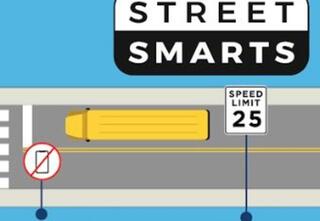
20. Describe how your school transportation is efficient and has reduced its environment impact:
The district always encourages car-pooling, biking, and walking as a first step toward sustainability efforts for a greener environment. This past year, we also constructed an additional dropoff circle to reduce dropoff lines; therefore, reducing idling time.
The district has also hired First Student bus company whose core beliefs align with our sustainability efforts, for example, in 2012, they were recognized by the NationalSchool Transportation Association with the prestigious Go Yellow, Go GreenAward for “greening” their school bus fleet. Each year, they divert more than 7 million pounds of motor oil and oil filters from landfills. This helps reduce methane gas emissions and provides an alternative end of life for the associated materials, directly benefiting the local communities we serve on our bus routes which supports our overall sustainability goals.
21. Describe any other efforts toward reducing environmental impact, focusing on innovative or unique practices and partnerships:
First Student supports research into transportation policy and the use of alternative fuels, staying educated on alternative fuel developments and assessing their commercial viability which aligns with our overall District goals.
IMPROVE THE HEALTH AND WELLNESS OF STUDENTS AND STAFF
A. ENVIRONMENTAL HEALTH
1. Describe your school's integrated Pest Management (IPM) program, including any certifications earned, routine inspections, pest identification, monitoring, record-keeping, and pest prevention activities.

An annual agreement is signed with Anderson Pest Control for each of the buildings within the district to offer monthly preventative service for insect and rodent control for the most common pests including roaches, ants, fruit flies, silverfish, wasps/bees, spiders, milliepedes, centipedes, ground beetles, crickets, sow & pill bugs, mice & rats. Detailed service records are maintained and made available via Anderson Pest Control of products and amounts used. Anderson Pest Conrol is a CERTIFIED GREEN PEST CONTROL company with the GreenPro designation which means that they comply with the procedures and systems established by the NPMA’s GreenPro Committee to ensure that all customers receive responsible, eco-effective service.
2. Describe the efforts or practices you have in place to minimize or eliminate the use of pesticides, both indoors and outdoors.
Per Board Policy - The Superintendent shall take all reasonable measures to protect: (1) the safety of District personnel, students, and visitors on District premises from risks associated with hazardous materials and (2) the environmental quality of the District’s buildings and grounds. Before pesticides are used on District premises, the Superintendent or designee shall notify employees and parents/guardians of students as required by the Structural Pest Control Act, 225 ILCS 235/, and the Lawn Care Products Application and Notice Act, 415 ILCS 65/.
3. Describe the actions taken or the practices your school employs to minimize or eliminate exposure to the following specific hazardous contaminants (if applicable):
a. Elemental Mercury
b. Carbon Monoxide from fuel burning equipment or appliances
c. Radon
d. Chromated Copper Arsenate in wooden playground equipment
e. Others (e.g. Lead, Asbestos, or PCBs)
Community High School District 99 hires Gallagher Bassett Technical Services under a 3-Year Inspection Agreement as well as a 6-Month Surveillance of asbestos containing building materials (ACBM) across our districts four buildings.
4. Describe policies and practices in place to promote security and life safety.
As part of the MFP, secured entrances have been created at both North High and South High. Secure entrances have two doors with an entry vestibule in the middle. Visitors wait in the vestibule while their government IDs are checked and visitor badges are issued. Once visitors are granted clearance, they will be admitted into the building.
Both schools also added two full-time and armed “Lead Security Officers,” both retired Police Officers. The Blue Point System – a rapid response system directly connected to the Police Station has also been added at each school. When the alarm is activated, police first responders are immediately notified, loudspeakers throughout the buildings broadcast emergency information, and strobe lights are activated both inside and outside the building.
We have also installed safety and security to cover select door entryways. The one-way film allows students and others who are inside to see outside, but block those outside from seeing into the building.
In addition, District 99’s Director of Physical Plant and Operations Jim Kolodziej presented the findings from the “life safety review” that was conducted for both schools in 2015. The review, which is required by the state and performed every ten years, determines what capital projects need to be addressed to ensure the safety and security of students and staff. These recommendations have been completed or will be completed per a budgeted timeline. https://www.boarddocs.com/il/csd99/Board.nsf/files/A2FLB94ED215/$file/Life%20Safety%20Projects%202016-17.pdf
5. Describe actions your school takes to prevent exposure to asthma triggers in and around the school, such as animals in the classroom, sanitation, or other airborne contaminants.
Community High School District 99 hires Gallagher Bassett Technical Serrvices to complete regular testing at all of our district buildings to deliver a consistent message to building occupants concerning the buildings superior air quality; Identify problems before they affect air quality or occupant's perception of the building's environment; assist the facilities staff to maintain the optimal environment by sharing environmental data so adjustments can be made. They conduct an indoor air quality study at each facility including collection of airborne mold spore samples at representative locations.
The District also has a Board Policy for using animals in the Educational Program. Animals may be brought into school facilities for educational purposes only according to procedures developed by the Superintendent assuring: (a) the animal is appropriately housed, humanely cared for, and properly handled, and (b) students will not be exposed to a dangerous animal or an unhealthy environment.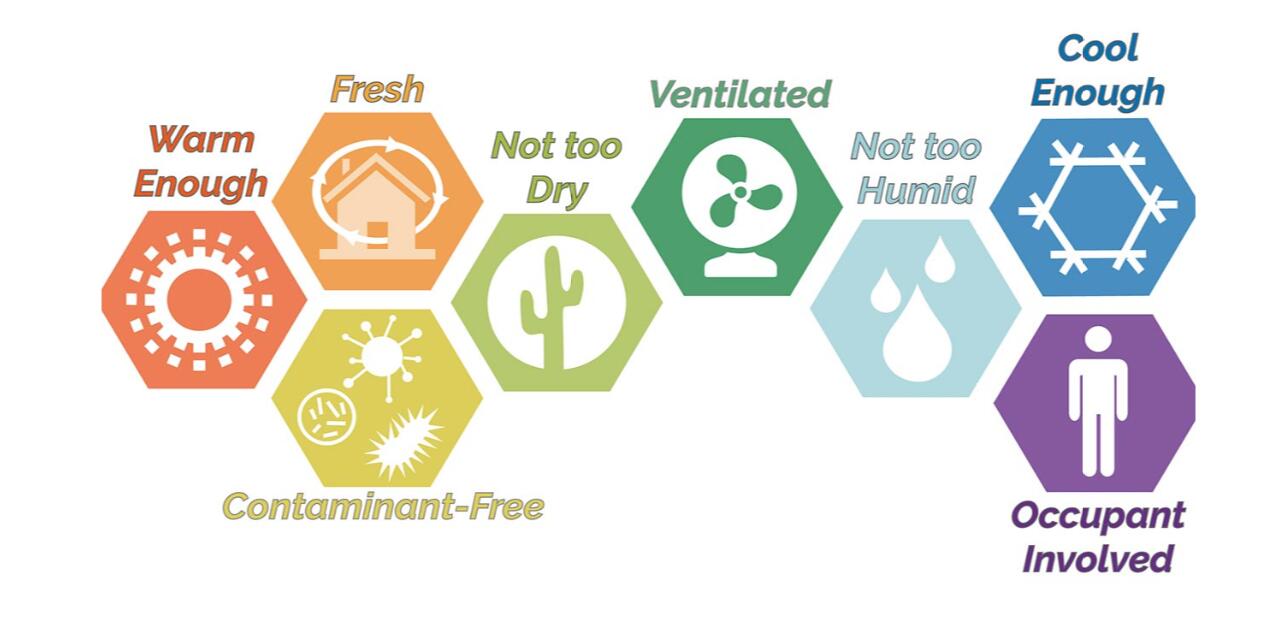
6. Describe actions your school takes to control and prevent leaks, moisture, condensation, and excess humidity; and to promptly cleanup moldy materials when it is found.
Gallagher Bassett Technical Services data identifies energy savings where temperatures or fresh air are outside of IAQ and energy parameters. They conduct an indoor air quality study at each facility including: Testing of the following at representative locations throughout the building during occupied periods with a minimum of three measurements at each site to identify trending: Temperature and humidity, Carbon dioxide - Carbon dioxide levels indicate the balance between occupants and fresh air ventilation, Particulate levels, Collection of airborne mold spore samples at representative locations. SchoolDude Preventative Maintenance Software program is used to maintain efficiency and regular maintenance on all systems to ensure quality and efficiency.
HVAC Maintenance contracts at each building help ensure systems are in good working order with regularly scheduled filter changes ensuring a proactive approach to cleaner well working systems.
7. Our school has installed local exhaust systems for major airborne contaminant sources.
Yes
New exhaust systems were installed in the newly designed classroom spaces through our recent MFP renovation project. These include science labs, ceramics rooms, and metal shops.
8. Describe your school's preventive maintenance program for the building's ventilation system, including unit ventilators to ensure it is clean and operating properly:
SchoolDude Preventative Maintenance Software program is used to maintain efficiency and regular maintenance on all systems to ensure quality and efficiency. Filters are changed on schedule.
9. Describe actions your school takes to ensure that all classrooms and other spaces are adequately ventilated with outside air, consistent with state or local codes, or national ventilation standards, including any periodic meausrements and record keeping:
We use a BAS System (Building Automated System) to constantly control and monitor air flow, temperature, etc. while reducing energy usage when facilities are not in use.
10. Describe other steps your school takes to protect indoor environmental quality such as implementing EPA IAQ Tools for Schools and/or conducting other periodic, comprehensive inspections of the school facility to identify environmental health and safety issues and take corrective action:
Community High School District 99 hires Gallagher Bassett Technical Serrvices to complete an indoor air quality study at each facility every six months where they spend one day at our Transition 99 and ASC Buildings and two days at each of the High Schools. They provide the results of all testing in a comprehensive report which discusses methodology, results and recommendations where applicable. They also communicate any HVAC deficiencies within five days of conducting the surveys so issues may be resolved quickly providing optimal indoor air quality at all times.
A Portable Indoor Air CO2 Meter has also been purchased for each of the buildings to be used at any given moment to determine an immediate reading. The Extech CO250 checks CO2 concentrations, calculates statistical weighted averages on TWA (8 hour time weighted average) and STEL (15 minute time weighted averages), and includes measurement ranges for CO2, Temperature, Dew Point, Wet Bulb, and Humidity and includes a programmadable audible alarm.
11. Describe your green cleaning policies, equipment, products and practices, and green cleaning certifications or awards:
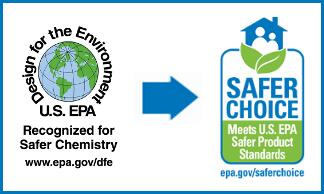
Using "green," environmentally-friendly cleaning supplies per EPAs Safer Choice program, which certifies products that contain safer ingredients for human health and the environment. In addition to the Safer Choice label, we also follow the EPA and EPA-N Design for the Environment (DfE) label on antimicrobial products, such as disinfectants and sanitizers. Whether a product displays the Safer Choice label or the DfE label, the same stringent requirements and high standards must be met for that product to become certified.
B. NUTRITION AND FITNESS
12. Does your school employ the programs below to promote nutrition, physical activity, and overall school health?
- Our cafeteria provides fresh meals daily with health choices for students.
- At least 50% of our students' annual physical education takes place outdoors.
- Health measures are integrated into assessments.
Give details about programs and successes: Fitness testing results are evaluated by students and used to set personal fitness goals. Our Food Services program Chartwells prepares meals for students and we have renovated our servery lines to include a wide variety of customizable and premade options throughout all nutritional categories while having allergen friendly options readily available.
13. Provide specific examples of actions taken which are innovative or unique practices and partnerships:
We have partnered with Chartwells to provide a wide variety of customizable options for students to ensure healthy and wholesome eating which include Build Your Own sandwiches, pizzas, pastas, taco bar, burger bar, salad bar, as well as a Market area of premade items for quick and easy access. Quick Grab n Go stations have been setup throughout the building as well with access to outdoor eating areas that promote physical activity such as spikeball or other sports during lunch periods.
14. Describe how outdoor education, exercise and recreation are promoted within the curriculum and outside the classroom.
Outdoor education, exercise and recreation are highly promoted throughout our district across many facets from physical education classes, science and health classes, and our Outdoor Environmental Club. In addition, outdoor patios and courtyards were also constructed this past year with new furniture to allow for additional academic use and eating areas.
All D99 PE classes have a fitness component. We encourage fitness development where students are expected to not only participate in fitness activities but also track their fitness progress over the course of the semester with daily physical activity as the main goal of the program. Students in Fitness I and II create individualized fitness programs. Students gear these towards their own fitness goals and sports and activities they are involved in. Our Health Education curriculum and courses promote Nutritional education to all students.
Our AP Biology students work all across Downers Grove to clean invasive plants from the Belmont Prairie, Lyman Woods, and many other areas across the village. In doing so they are are outdoors, they are learning about various types of species and about sustainability.
Our Outdoor Environmental Club spends many weekends biking through the forest preserves, camping at Starved Rock, kayaking on the Fox River and canoeing on the Illinois River.
In 2018 and 2019, the science department lead an optional, family funded excursion to Costa Rica to provide the opportunity to see sustainability and biodiversity in action in a small, homogeneous country. Students visited a sustainable farm, sustainable coffee and cocoa plantations and factories, and were given biodiversity training in many of our excursions. We visited with Costa Rica local families who showed us how Costa Ricans grow up with the understanding of the importance of water in their lives. We snorkeled on 2 coral reefs to see the damage caused by pollution as well as to hear about restoration practices that are being developed to bring the reefs back from extinction.
15. Describe efforts to improve nutrition, health, fitness of students and staff, highlighting innovative practices and partnerships
District 99 has formed extensive partnerships that schedule speakers each semester to come and present in Health classes. These speakers include representatives from NAMI, Erika’s Lighthouse, ABRAXAS, TeenParent Connection, the DuPage County Health Dept., and Illinois Safe Schools.
Every other year, Young Hearts 4 Life comes into both schools and conducts cardiac screenings; as well as, both schools host a wellness fair and invite community based organizations to come into the building and interact with our students about their services. These fairs cover physical, mental and emotional health.
Students are also encouraged to participate in the district’s Dual Credit course offerings that have been made available through Partnership with College of DuPage for Personal Trainer Certification and Personal Safety & Wellness.
A partnership with Downers Grove Park District teaches sports officiating which leads to jobs as referees for park district games.
C. COORDINATED SCHOOL HEALTH, MENTAL HEALTH, SCHOOL CLIMATE, SAFETY
16. Does your school use a Coordinated School Health approach or other health-related initiatives to address overall school health issues?
Yes. Health initiatives span a broad spectrum. For starters, we provide health and nutritious meals in our cafeterias with a wide variety of choices for all tastes including gluten sensitivities and allergy awareness. We also conduct wellness initiatives such as a student heart health screening each year and wellness screenings each year for every staff member.
Our Positive Behavioral Interventions and Supports (PBIS) provides a tier one focus on social emotional supports based on State social emotional learning standards. We conduct suicide prevention and screenings during 9th grade and in our Health Courses, North and South have a SEL collaborative teacher group working to instill social emotional learning tenets in the school and classroom. This group of SEL (Social Emotional Learning) teachers and CSSS members meet monthly to talk about embedding SEL into our daily practices.
Our buildings have been renovated to make access to counseling and social services easily assessable during lunch periods and study halls. Online counseling appointments are easily scheduled with confidentiality and convenience. Wellness and Mental Health Resources are widely available via the CSSS Teams at each building and online. Psychologist, Social Workers, Counselors, Nurses are well staffed and on site during school hours and also participate in the DuPage Health NARCAN program. All students and staff participate in quarterly Deep Equity and Inclusion sessions creating Affirming Learning Environments. Live plants were installed inside to improve focus, lessen symptoms of anxiety, and boost the moods of staff and students.
Mental health and wellness are further supported through Mindful Mornings, PBIS Initiatives, AVID, STRIVE programs, Vaccine Clinics, coat and food drives. Charitable runs are hosted to foster health and scholarships such as the Grove Express and Mustang 5K annually.
17. Does your school partner with any outside institutions, business clubs, nonprofit organizations, or community groups to support student health and safety?
Yes. We work with Referral GPS to provide families with mental health resources Collaborate with DuPage Regional Office of Education through active participation in their Student Service Committee with a focus on student social emotional well-being Collaboration with DuPage Health Department’s Behavioral Health Committe and Zero Suicide Sub-Committee Began a partnership with Reclaim 13 this school year to support their initiative in dealing with sexual exploitation.
18. Describe your school's curriculum content for student health and fitness as well as its applied learning:
Encouraging the total development of the student with emphasis upon physical, social and emotional well-being allows for short- and long-term goal achievement. The wellness program designs specific educational and activity programs that include choices and decisions based on healthy attitudes for a positive lifestyle. Specifically, the practical application of physical education and wellness allows for greater kinesthetic sense, aesthetic awareness, self-identity and self-esteem. This philosophy addresses the premise that physical education and wellness are a part of the educational process seeking to transmit, evaluate and enrich aspects of culture. Sport as a valued cultural form plays a vital role in human life. With the all-encompassing nature of physical education, opportunities to develop individual potential for a productive, healthy and well-balanced future are possible. It is through psychomotor, cognitive and affective learning that students are prepared for their present educational roles and future goals. The comprehensive program includes fitness and fitness-related activities, team sports, dual sports, individual sports and activities, rhythmic movements, aquatics, life-survival skills, health-related activities and activities promoting lifetime recreational pursuits.
EFFECTIVE ENVIRONMENTAL LITERARCY
A. A SCHOOL CULTURE OF SUSTAINABILITY
1. Describe what sustainability means to your school or district in particular. How is sustainability included in your mission to educate students?
District 99 is committed to ensuring energy conservation and environmental awareness. Both are important not only to the future of our students, but also to being fiscally responsible to our taxpayers. Creating a district culture that promotes reducing our environmental impact is promoted through SEL collaboratives, groups, STEM and Green clubs, and community partnerships that focus on this key initiative.
2. What role has the administration played in the culture of sustainability at your school?
District 99 has encouraged, supported and provided resources for students and staff to engage in environmental sustainability initiatives.
3. What practices, working groups, or committees does your school employ to help ensure effective environmental and sustainability education? Provide specific examples of actions taken.
Various groups of students and staff have been formed throughout our schools.
We have a SEL (Social Emotional Learning) Collaborative - a group of teachers and CSSS members who meet monthly to talk about embedding SEL into our practices.
For the past 7 years, our Science Department has partnered with the Illinois Science and Technology Coalition of Chicago to provide a research challenge for students that is centered around better ways to generate and use energy and better ways to clean and conserve water resources. The students worked in a platform called the Mentor Matching Engine and our school would be partnered with an industrial partner, such as Illinois State University Center for Math, Science and STEM Education (CEMAST) or ComEd to help develop innovative ideas for use of solar, wind, and additional technologies to move toward a greener method of energy production. Each year our “winning” team from DGN was provided the opportunity to present their project in front of 50 (+) industry partners and 150 school districts at Motorola or Google in Chicago.
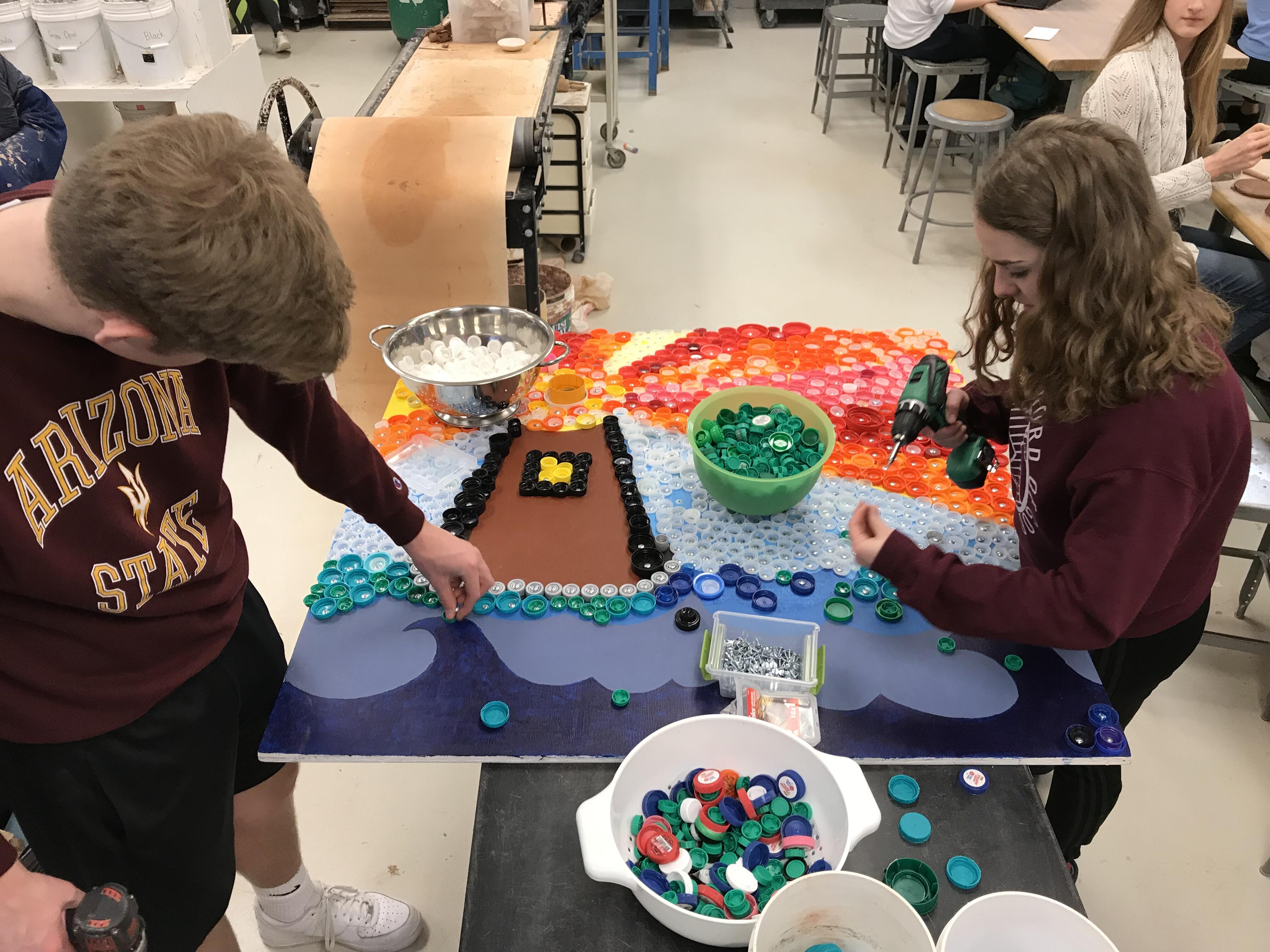 Over the years our students have also developed and presented ideas for a homeowner purchased electricity capture device and a school bus with solar panels. For 8.5 years we have had a very strong partnership with Morton Arboretum. Dr. Andrew Hipp, a world leading botanical researcher has written a National Science Foundation Grant that allows him to come into the classroom and lead our AP Biology students through the research process of studying seeds, germination, and growing conditions associated with Illinois native prairie plants. The Morton Arboretum has a very large research plot on their protected grounds that studies the effect of speciation on propagation of native plants. There are approximately 300 test beds that are planted in a homogeneous and heterogeneous state. Not many researchers have access to this NSF funded research area, but our students have been there for 6 years to measure, count and analyze data that goes into Dr. Hipps reports.
Over the years our students have also developed and presented ideas for a homeowner purchased electricity capture device and a school bus with solar panels. For 8.5 years we have had a very strong partnership with Morton Arboretum. Dr. Andrew Hipp, a world leading botanical researcher has written a National Science Foundation Grant that allows him to come into the classroom and lead our AP Biology students through the research process of studying seeds, germination, and growing conditions associated with Illinois native prairie plants. The Morton Arboretum has a very large research plot on their protected grounds that studies the effect of speciation on propagation of native plants. There are approximately 300 test beds that are planted in a homogeneous and heterogeneous state. Not many researchers have access to this NSF funded research area, but our students have been there for 6 years to measure, count and analyze data that goes into Dr. Hipps reports.
There have been several outgrowths of this work, the largest being that we have now partnered with the Downers Grove Township on a smaller version of a research prairie on the grounds at the DG Township’s new community outreach building. This is located just North of the DGN campus and will allow our students the opportunity to grow their own natural prairie, and study the variables associated with growing and maintaining a native prairie sample. We will use this plot, also as a learning laboratory for the community to show how to grow a sustainable plot in one's own backyard.
A second outgrowth of our work with the Morton Arboretum is that Dr. Hipp was able to hire teachers and students to work at the Morton Arboretum for the last 4 summers as part of an internship program that was funded by the National Science Foundation grant.
Beyond that, our AP Environmental Science classes have collected and sorted trash from the lunches for the last 3 years. They weigh the different components of organic, and non organic materials to make suggestions for how to compost, recycle, and reuse. As part of this project, students began leaving their state mandated apples on a tray so that others could take advantage of these and they would not end up streamlined into the trash receptacles. We also weighed the styrofoam. This data has lead to a significant decrease in the amount of styrofoam used and the amount of styrofoam that ends up in the landfill.
4. Does your school have a green team, garden club, or a community green committee on sustainability? Who participates? What kinds of project or activities do they undertake? What roles do they play in the school?
District 99 students participate in several clubs related to environmental sustainability. Earth Action Club is dedicated to preserving the environment and developing awareness of the harmful effects our actions can have on the environment. Students in our empowerment club, focus on sustainability and students in our Outdoor Environmental Club develop an environmental awareness through engaging in various activities. They also run a Pumpkin Smash for recycling Halloween jack-o-lanterns. On or around Earth Day each year some students participate in an Energy Slam and invite students in other classes as spectators. They prepare presentations around more sustainable energy options. As an extension of our trip we had a group of students that returned from Costa Rica inspired to start a Sustainability Club. They have begun an education program for students and have begun to investigate the idea of composting, and recycling better once we return to in-person learning. This Sustainability club is a subgroup of the Empowerment Club. Our AP Environmental Science course have field trips as part of their required curriculum. Each year our students travel to a water treatment plant, a landfill, a business such as “The Plant” in Chicago that is a sustainable business, and an energy generating facility. Jeff Grant (AP Bio Teacher at North) wrote for and won a National Science Foundation grant to provide seeds and plugs for the new research prairie partnership with the Downers Grove Township.
5. Describe other ways your school integrates sustainability into daily habits and culture of the school's staff, volunteers, students and community (e.g., recycling days, no bottled water, murals, themed events, virtual backpacks, etc.)
District 99 is dedicated to recycling. As a 1:1 Chromebook district that has allocated funding to support teachers utilizing digital resources and assessments, thereby reducing the need for paper. Students painted a mural in the cafeteria promoting recycling (North). We also have water refilling stations throughout the buildings. The students worked on a bottlecap mural - Eco Friendly Art Project Philanthropy for Good Mental Health Supporting Erika's Lighthouse -Made from Recycled Bottlecaps at Downers Grove South. We do promote virtual backpacks providing many online resources, Google Doc assignments versus printing paper.
6. Any other school practices, visions, projects, plans, or information you want to include to showcase the environmental work your school has achieved?
AP Environmental Science class does an annual waste audit after school lunch periods Our Women in STEM club printed out posters to hang in every room and in the common areas above the recycle bins for what items fall into the various categories of recycling.
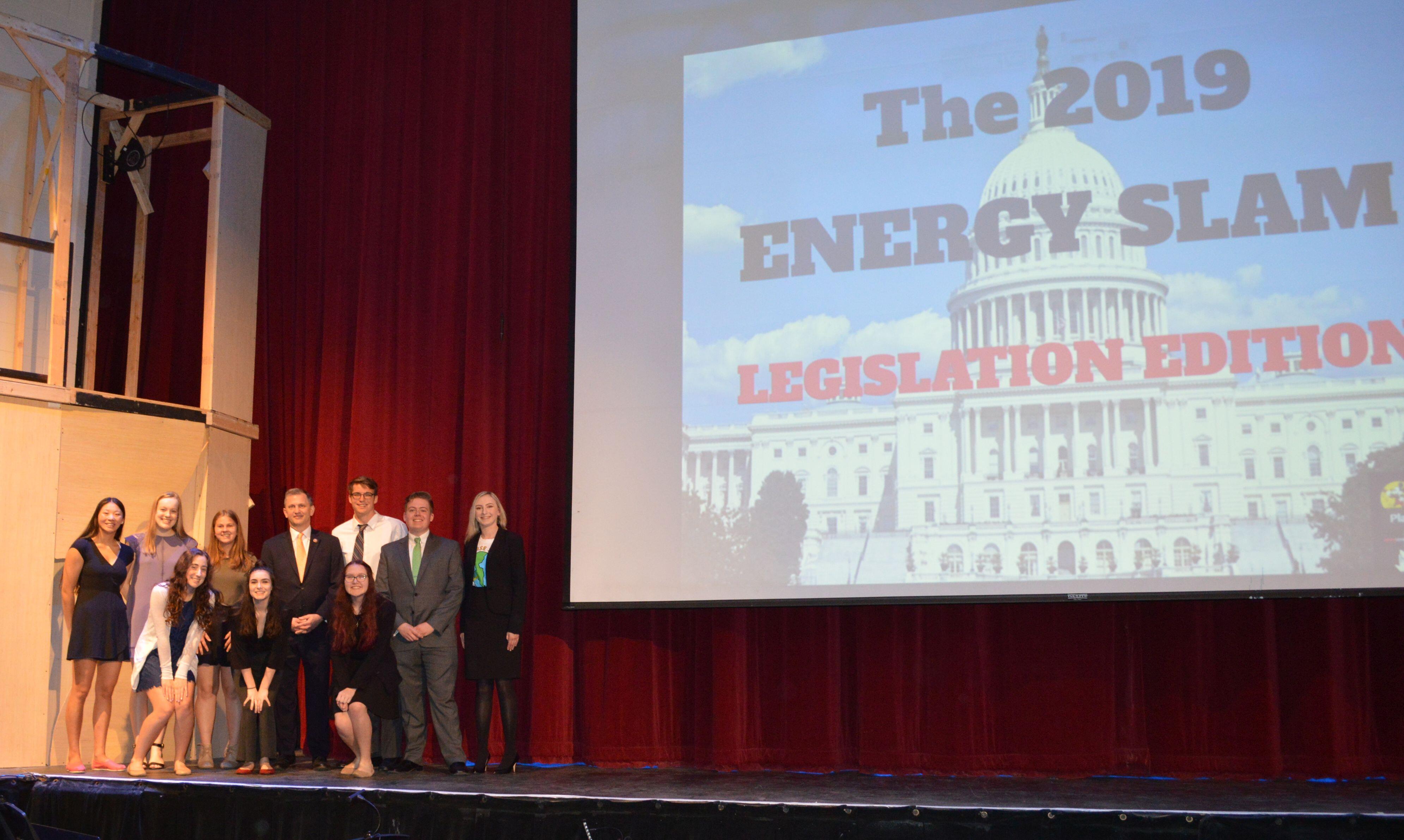
B. CURRICULUM AND PEDAGOGY
7. Does your school have a written definition and requirement for environmental literacy? Is there an assessment required?
All staff and students are required to participate in quarterly Equity and Inclusion sessions and compete a form of understanding/feedback after each session. These sessions of environmental education teach individuals how to weigh various sides of civic learning issues through critical thinking and it enhances their own problem-solving and decision-making skills while increasing public awareness and knowledge of environmental issues.
8. How does your school use sustainability and the environment as a context for learning STEM? How is sustainabilty and the environment incorporated into the curriculum in all areas?
Through the partnership with the Downers Grove Township, students and the Downers Grove committee will essentially have a STEM lab for research and learning. As part of NGSS, we have had some teachers integrate the study of climate change and sustainability into their existing curriculum. In Megan Marrs chemistry classes she has student place seashells in various acidic solutions to have students understand the damaging effects of ocean acidification. In John Sipple’s chemistry class they test the density of water at various temperatures. While this is a middle school content topic, he has the HS students extrapolate the data from small test tube volumes to equate the change to the change in volume of the oceans due to global temperature increases. This data is then used to see the damaging effects that ocean expansion will have on coastal cities.
9. How does your school use sustainability as a context for learning green technologies and/or career pathways?
Through the partnership with the Downers Grove Township, students and the Downers Grove committee will essentially have a STEM lab for research and learning. As part of NGSS, we have had some teachers integrate the study of climate change and sustainability into their existing curriculum. In Megan Marrs chemistry classes she has student place seashells in various acidic solutions to have students understand the damaging effects of ocean acidification. In John Sipple’s chemistry class they test the density of water at various temperatures. While this is a middle school content topic, he has the HS students extrapolate the data from small test tube volumes to equate the change to the change in volume of the oceans due to global temperature increases. This data is then used to see the damaging effects that ocean expansion will have on coastal cities.
10. Describe students' outdoor learning experiences at multiple grade levels. How do they support curriculum content?
Our science teachers and clubs provide students with outdoor learning experiences when possible. Our Biology 2 students have two different field experiences to collect samples that they can then study throughout the course of the year.
11. If applicable, describe how the school grounds are devoted to environmental education uses:
District 99 just signed an Intergovernmental Agreement to partner with the Downers Grove Township to create a prairie on township land. The prarie will serve as a lab for our students and serve the larger Downers Grove community.
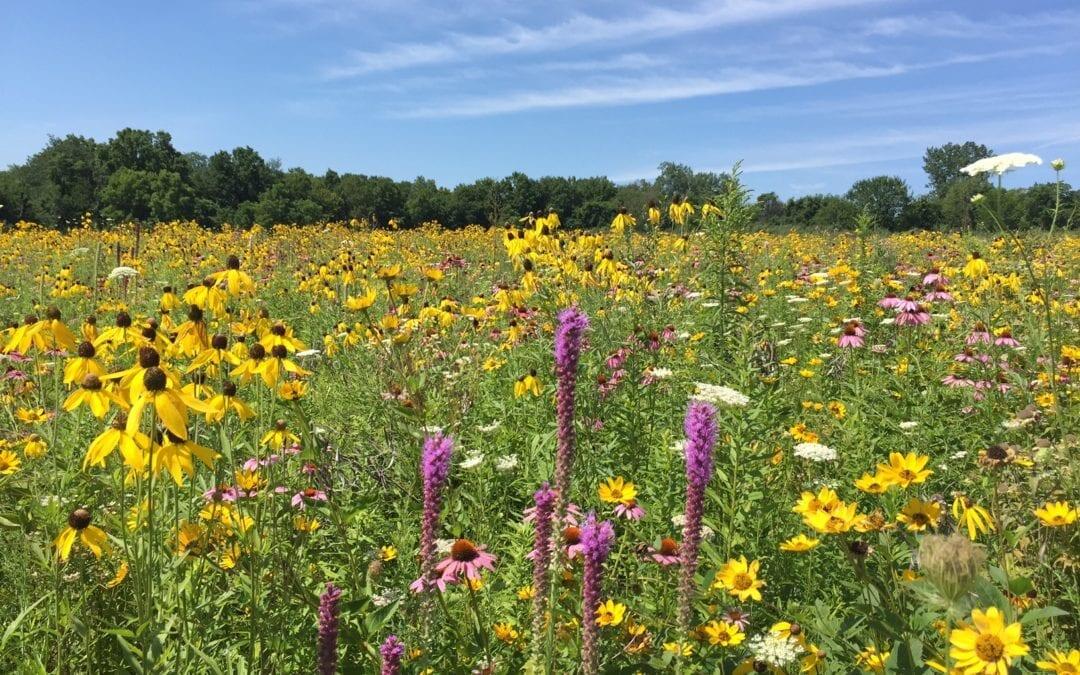
C. COMMUNITY INVOLVEMENT
12. Describe how your school promotes student and teacher engagement with the community and civic involvement outside the school? Have there been green themes to their work?
Participated in Earth Chats Podcast with SCARCE. Adopt a Highway –cleaning highways each year.
13. Describe your partnerships to help your school and other schools achieve in the 3 Pillars.
Participated in Earth Chats Podcast with SCARCE. Adopt a Highway –cleaning highways each year.
14. Describe how your school shares environmental education or sustainability events with other schools or organizations?
We host various Science Fairs for the area elementary and middle schools in the area. We also host the Univar – You Be the Chemist annual event.
D. PROFESSIONAL DEVELOPMENT
15. In your required staff professional development for all teachers, is sustainability education or environmental education training included?
Equity and Inclusion training is required for all staff and students once a quarter. SEED (Seeking Educational Equity & Diversity, as well as DEEP Equity and Cooperative Learning are all Professional Learning Opportunities that exist for D99 staff to use cross-curicular development to further their understanding of environmental and sustainability education including civic learning. Focused learning through creating and mastering knowledge, which includes character education, citizenship, communication, critical thinking/problem solving, collaboration, technology competencies, information literacy, and creativity/imagination as well as content learning standards. D99 also hosts The Future Focused Professional Learning options to explore and implement practices focused on Deep Learning and Flexible Learning Experiences that could include sustainable and environmental education sharing collaboratives.
16. What workshops or professional development events have your teachers attended themed around environmental topics?
AP Environmental Science Teachers, Steve Ruffolo (DGN), Jackie Weishaar (DGN) and Kate Troyer (DGS) attended training prior to starting up the AP Environmental Science course. The main focus of AP ES is to lead students to understand the interconnectedness of bio systems, how human impact affects these bio systems and how we can mitigate the effects of the negative impacts and enhance the positive impacts. Steve Ruffolo attended a workshop at the University of Buffalo where the focus was on case studies that incorporate the idea of sustainability and biodiversity to put students into the roles of researcher, clinical technician, economists, business owners, community leaders, community activists, and general voting population to play out the dynamics of environmental policy discussions. All of our Biology teachers have attended workshops at NISE (Northern Illinois Science Educators) for countywide professional development days. As part of this conference, there have been sessions and thematic strands on biodiversity and sustainability. If needed, detailed evidence can be provided for the concepts that were discussed and brought back for use in the classroom.
17. Have your teachers or staff earned any certifications in environmental education? What kind have they earned?
All of our AP Environmental Science Teachers (Steve Ruffolo, Jackie Weishaar and Kate Troyer) have been trained to teach AP Environmental Science.
18. Have any of your teachers or staff received any awards related to environmental education?
Jeff Grant (AP Bio Teacher at North) wrote for and won a National Science Foundation grant to provide seeds and plugs for the new research prairie partnership with the Downers Grove Township.
19. Do any of your teachers or staff hold environmental education related volunteer positions or memberships?
No
